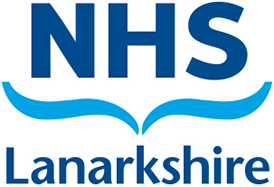Rheumatology - Joint injection clinic
Injecting joints with steroids is a common procedure in rheumatology. It is used as part of the treatment of inflammatory arthritis, such as rheumatoid arthritis.
Joint injections are performed by all rheumatologists, most rheumatology nurses, physiotherapists and podiatrists. It can be carried out during patient appointment in the clinic. Some patients will be referred for the procedure to Nurse Led Clinic, Day Ward, or to stand-alone Joint Injection Clinic.
What is the injection for?
The aim of the injection is to reduce inflammation by delivering a powerful anti-inflammatory medication (steroid) directly to the affected site.
How quickly and how long does it work for?
The reduction of swelling and pain is usually noticeable on the second day after the injection. Sometimes the effect may take a couple of days to develop. If the injection is effective, the improvement of symptoms should last up to two months, sometimes longer.
What does steroid injection involve?
Most joint injections are quick and easy to perform. The clinician will first examine your joint to find the best place to inject. Next, the skin around the area for injection will be cleaned.
The injection will usually include local anaesthetic either given separately at the beginning or mixed in the same syringe as the steroid.
After the steroid is injected the needle will be taken out. Once the needle is in place, the whole injection will take around 30 seconds. The whole visit will take approximately 20 minutes.
How should I get ready to the injection?
If you would prefer to
- Bring shorts for an injection of your knees or hips
- Bring a vest for an injection of your shoulders
To be able rest your joints after the injection
- You may have to cancel work planned for the rest of the day.
- You may have to arrange for someone else to take you home.
What should I do after the injection?
After a joint has been injected with steroid, you should try to rest it as much as possible for 24 hours. Avoid strenuous exercise and try to avoid physiotherapy for the next day. Activity will not harm you but the more you can rest the joint, the better the steroid will work.
You can go back to your normal activities after 24 hours.
It is not contraindicated to drive after a joint injection.
What are the possible side-effects?
Side effects of a joint injection are very rare.
Occasionally the joint pain may get worse after an injection. This usually settles by itself in a few days.
Very rarely, an infection can be introduced into a joint by a steroid injection. An infection causes the joint to become extremely sore, hot and swollen some days after the injection. The risk of joint infection is increased if you have infection somewhere else at the time of injection. You should inform the clinician about it before the procedure is carried out.
Some people experience facial flushing or menstrual irregularities after steroid injections.
Special precautions are required for patients with diabetes or those who are on warfarin. If you have diabetes or are on warfarin, you should tell the clinician before you have a joint injection.
If you have any concerns about a joint infection after a steroid injection you should seek urgent medical help. This can be done by calling our helpline Monday to Friday from 9am until 5pm, or attend your local Accident and Emergency department.
- 01698 366044 (Monklands/Wishaw)
- 01355 585691 (Hairmyres)
- Out with these hours, you should contact NHS 24 by dialing 111
Your Feedback – comments, concerns and complaints
NHS Lanarkshire is committed to improving the service it provides to patients and their families. We therefore want to hear from you about your experience. If you would like to tell us about this please visit our feedback page.

